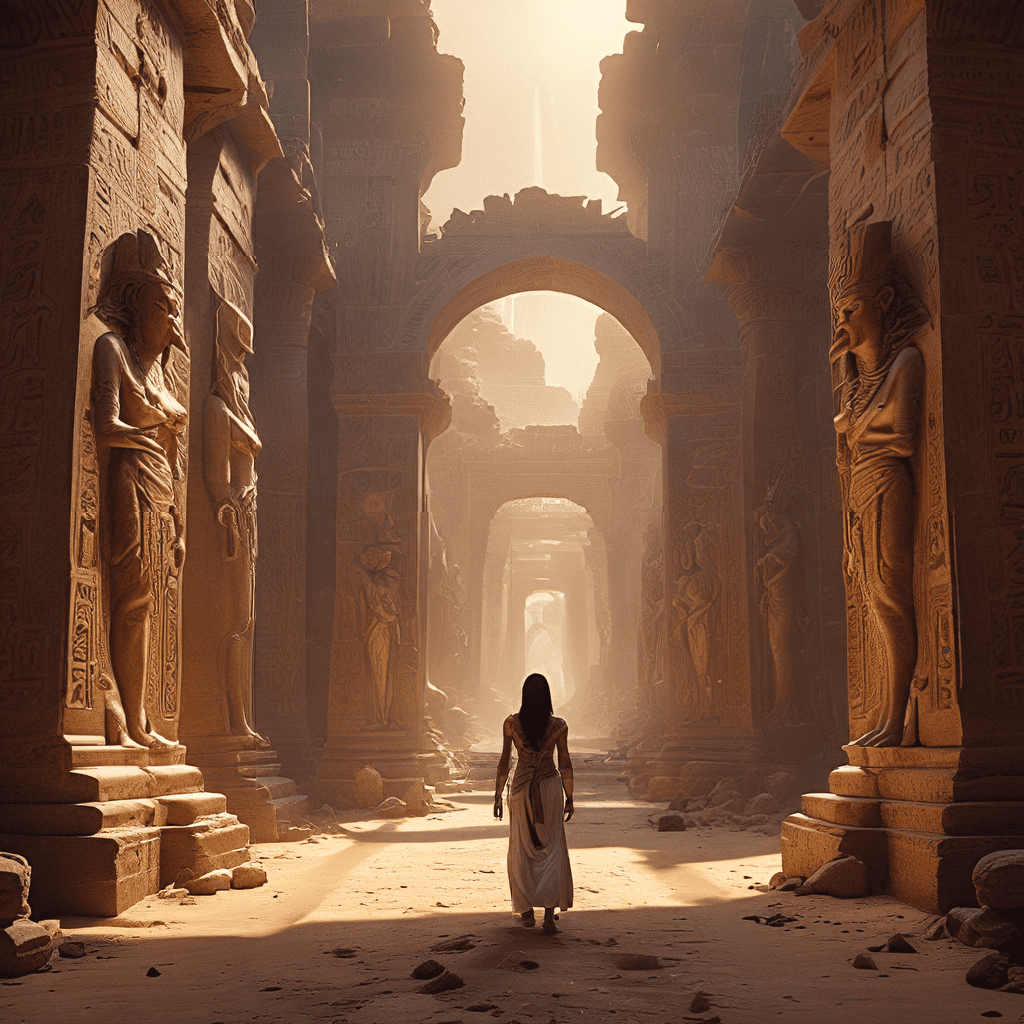The Egyptian Underworld: The Land of Eternal Peace
1. Introduction: The Concept of the Afterlife
For the ancient Egyptians, life wasn’t just about what happened here on Earth. They believed in an afterlife, a spiritual realm where the soul would continue its journey after death. This belief shaped every aspect of Egyptian life, from their grand pyramids to their elaborate burial ceremonies. The idea was that if you lived a good life, you could achieve eternal peace and happiness in the afterlife. This meant preparing the body for its journey to the Underworld, a place where souls would be weighed and judged based on their actions in life.
2. Journey to the Underworld: A Labyrinth of Trials
The journey to the Underworld was seen as a difficult and perilous one. The “Book of the Dead” served as a guidebook, offering spells, prayers, and instructions for navigating the challenges ahead. The deceased soul would have to cross the River of the Dead, often depicted as the Nile, to reach the other side. Then, they faced the Weighing of the Heart Ceremony, where their heart was placed on a scale against the feather of truth, Ma’at. The god Anubis, with his jackal head, presided over this ceremony, ensuring fairness. If the heart was lighter than the feather, the soul was allowed to enter the Underworld. But, if it was heavier, the soul was devoured by Ammit, the “Devourer of Souls,” a creature with a lion’s head, a crocodile’s body, and a hippopotamus’s hindquarters.
The journey also involved navigating through various mythical creatures and challenges. The deceased soul had to answer the “Two Truths,” a series of questions concerning their moral conduct in life. This was a test of their knowledge and understanding of the divine laws. Passing these trials was crucial for achieving eternal peace in the afterlife.
3. The Fields of Reeds: A Peaceful Abode
Those who successfully passed the trials would arrive at the Fields of Reeds, a paradise-like realm in the Underworld. It was a place of lush vegetation, fertile land, and eternal life. Here, the souls would enjoy eternal joy and contentment under the watchful eye of Osiris, the god of the Underworld. He was also the god of rebirth, responsible for overseeing the transformation and resurrection of souls in the afterlife. He ensured that those who lived good lives enjoyed the rewards of eternal peace in this beautiful paradise.
4. The Underworld as a Symbol of Transformation
The Underworld wasn’t just a gloomy or scary place. It represented a profound transformation. It was a place where the soul could shed its mortal shell and evolve into a new form, shedding the burdens of earthly existence. This was directly linked to the concept of Ma’at, the principle of cosmic order and righteousness. By living a virtuous life, a person could achieve Ma’at, which ensured a peaceful afterlife. Therefore, the Underworld was a reward for a life lived according to divine principles, a place where the soul could finally rest and be at peace.
5. The Role of the Sun God Ra
Ra, the sun god, also played a vital role in the Underworld. His daily journey through the sky was mirrored in the Underworld, where he traveled on his “solar barge” across the night sky. As he sailed through the Underworld, he illuminated the path for the souls, guiding and protecting them. This daily journey also symbolized the eternal cycle of death and rebirth, offering hope and renewal for the souls in the Underworld.
6. The Myth of Osiris and the Birth of the Underworld
The story of Osiris, the god of the Underworld, is central to understanding this realm. Osiris was murdered by his jealous brother, Seth, and his body was dismembered. His wife, Isis, gathered the scattered pieces and brought him back to life. Osiris, however, remained in the Underworld, becoming its ruler. This myth represents a powerful message of hope and renewal, symbolizing the triumph of life over death. It also shows the importance of family and the power of love in overcoming even the most difficult challenges.
7. The Importance of Funerary Rituals
The Egyptians believed that the body was a vessel for the “ka,” the spiritual essence of a person. To ensure a successful journey to the Underworld, elaborate burial ceremonies were conducted. They involved mummifying the body to preserve it for the afterlife, providing the deceased with offerings and amulets to help them on their journey, and building grand tombs to house the remains and protect them. These rituals were seen as vital to assisting the deceased in their transition to the afterlife, ensuring their eternal peace and happiness.
8. The Underworld in Egyptian Art and Literature
The Egyptian Underworld is vividly portrayed in their art and literature. Tomb paintings depict the journey to the Underworld, the Weighing of the Heart Ceremony, and the Fields of Reeds. Texts like the “Book of the Dead” provide detailed descriptions of the Underworld. These depictions offer valuable insights into the Egyptian worldview and their beliefs about the afterlife. They show how the Underworld was a complex and fascinating realm, a place of both challenges and rewards, where the souls of the departed journeyed to achieve eternal peace.




